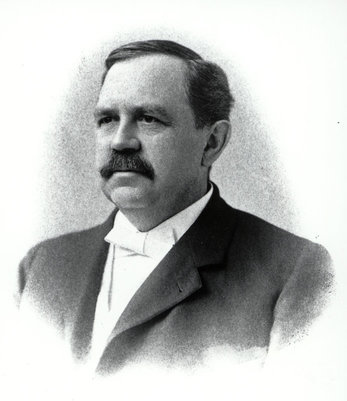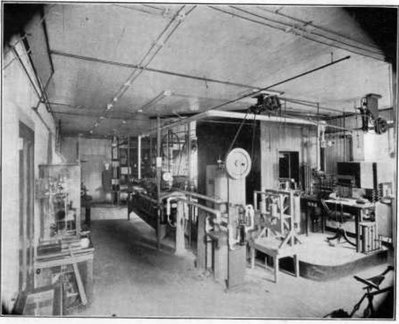The Atwater Study
Wilbur Olin Atwater (1844-1907), an American chemist, proposed the metabolizable energies of protein (4 kcal/g), fat (9 kcal/g) and carbohydrates (4 kcal/g). While proposed in 1910, these values are still used universally today. This means we are basing our nutritional guidelines on experiments done 120 years ago. It is not hard to imagine that the accuracy of this data is not what we want it to be.

Wilbur Olin Atwater (1844-1907)
Atwater used a respiration calorimeter to study human metabolism. A respiration calorimeter is a device that measures the changes in heat in an enclosed system. A test-subject’s respiration causes changes in the environment’s temperature, which are recorded by the calorimeter. Temperature data is combined with measurements of the respiratory products in the in- and outgoing airflow and measurements on the excrements of the test-subject. By giving the test subjects varying diets, the data allowed Atwater to calculate the metabolize energies of the three macro-nutrients.
The diets given to the test-subjects were different what is recommended today by authorities. This makes it so that 73% of Atwater’s experiments (99 total) were carried out under unsuitable nutritional conditions according to current guidelines. In 20% of his experiments, the subjects drank the equivalent of 5 beers a day. He only acknowledges later that the alcohol would be having an effect on his measurements.
For his calculations he assumed fibers like cellulose on the same level as starch regarding digestibility. Starches are often fully digested to small sugars and glucose by the human digestive tract, while fibers are not. Proteins were divided into proteids (eg. albumen, casein, myosin and gluten, etc.) and non-proteids (eg. creatine, creatinine, and amides in vegetables, etc.), but the proteid fractions he used vary greatly from current knowledge. Additionally, he used fats that are rarely consumed nowadays, while assuming that 92% of fat intake comes from animal sources. Current recommendations advocate that less than one-third off all fat should come from animal sources. A final objection is that we should doubt the accuracy of the analytic instruments used 120 years ago.

The respiration calorimeter used by Atwater.
Even with all these limitations, Atwater did build the foundation for nutritional science and human metabolism. The question is why we aren’t building the house. We need studies with current demographics and nutritional guidelines using accurate analytical instruments to properly understand human metabolism. Just repeating Atwater’s studies with these improvements will be a hard case to sell though. You are in fact proposing to lock people into a tiny room for a considerable amount of time, meanwhile sustaining them with what is now considered an unhealthy diet. Try and get that through the ethics committee.
Website: FoodLabScience.
Great post dude! How long does it take you to make those videos? :) Looks like a great way to present your breakdown of a scientific topic in a digestible way. Perhaps you should consider uploading your videos on DTube as well?
(DTube is a very new YouTUbe-like service that is built on the STEEM Blockchain. Still early stage, but could be a nice way for you to get your content out!)
Thanks! It depends on the topic and how much time I have next to my job. So with research, writing, recording and animating it can take anywhere from a couple hours of work to 15-20 hours.
I'll look into DTube as well (I think I saw it come by sometime on Steemit).
Cool! Thanks for the answer :) I think you can do very well here if you find a clever way of mixing and integrating what you seem to enjoy making on steemit. I think this platform is by far your best shot at obtaining a regular following and a decent income early. But it will take some engagement with other steemers.
Anyways, great to see you here!
Impressive! I hope you will find the time to record more of these :)